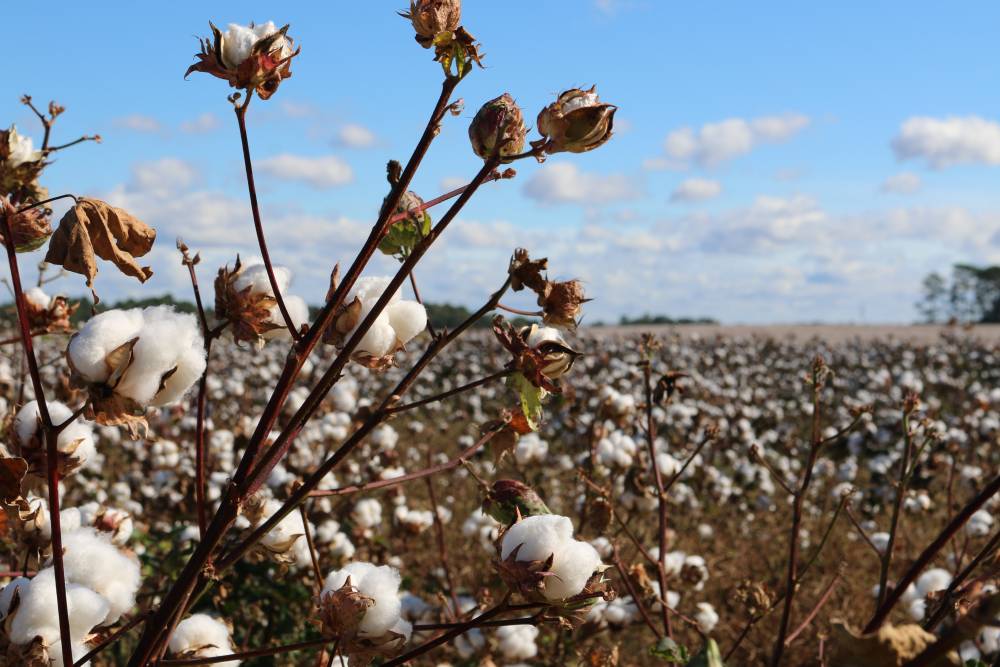
Eco-friendly clothes made from organic cotton are a great option for conscious consumers trying to adopt a more sustainable lifestyle. They help the planet and protect the environment in many ways, preserving human health and ecosystems.
The case for organic cotton is easy to make. It's so much better than conventional cotton because it's non-GMO and grown organically, without the use of hazardous herbicides, pesticides, or fertilizers.
In some cases, wearing clothes made from organic cotton reduces the carbon footprint of your wardrobe. But organic clothing is more expensive than regular clothing and remains inaccessible to a lot of consumers.
Organic cotton is expensive because of its very limited availability, higher production costs, and relatively low demand.
Organic cotton is ethical, sustainable, and environmentally friendly. Buying organic cotton fabric helps the planet, the people, and the animals living on it. But it may be difficult for some people to include it in their monthly clothing budget.
One could argue that it's worth buying organic cotton over conventional cotton. But there are still some disadvantages. In some cases, organic cotton production uses more resources.
Because the green movement is booming and more consumers are demanding eco-responsible and fairly produced clothing, many fashion designers and brands choose to produce sustainable clothes made from renewable resources such as organic cotton.
Organic cotton has a bright future in the fashion industry, as the demand for eco-friendly and organic clothing increases. It will become more affordable in the coming years when production quantities rise.
Let's make the case for organic cotton over conventional cotton.
Panaprium is independent and reader supported. If you buy something through our link, we may earn a commission. If you can, please support us on a monthly basis. It takes less than a minute to set up, and you will be making a big impact every single month. Thank you!
Regular cotton production is terrible
Organic cotton clothes are made from cotton fibers, produced from a natural and renewable resource: cotton plants. The cotton plant grows in subtropical countries around the world.
30.3 million tons of cotton are produced each year globally, according to the data of the Food and Agriculture Organization of the United Nations (FAO).
The largest producer of cotton worldwide is China with 6.1 million tons of cotton produced in 2018, followed by India (4.69 million tons), and the United States (4 million tons).
According to the Textile Exchange Organic cotton market report, the annual global production of organic cotton reached 107,980 tons in 2016.
Regular cotton production is terrible and very wasteful. It's mass-produced and has a disastrous social and environmental impact.
Conventional cotton production destroys biodiversity and soil fertility. It creates health problems and kills wildlife because it uses pesticides, herbicides, and insecticides containing toxic chemicals.
Cotton farming consumes 4% of worldwide of nitrogen and phosphorous fertilizers, 16% of all insecticides, and 7% of all herbicides, according to the Global Fashion Agenda. But it accounts for only 2.5% of the total agricultural area on Earth.
The production of conventional cotton uses harsh chemicals such as orthophosphates (phorate and methamidophos, endosulfan and aldicarb), and man-made pesticides such as Trifluralin, Toxaphene, and DDT.
These strong chemicals are released into the nearby environment and have harmful effects on farmers' health and ecosystems. Many pollutants are controlled and limited by international usage restrictions. But agricultural use continues in many East-Asian countries.
Fortunately, many organizations around the world are actively working to protect human health and animal lives from agricultural pesticides.
The U.S. Fish and Wildlife Service work to avoid and minimize adverse effects to threatened and endangered species and their critical habitat from the use of pesticides.
The World Health Organization (WHO) estimates that three million cases of pesticide poisoning occur every year, resulting in an excess of 250,000 deaths. This mortality accounts for a substantial fraction of the almost 900,000 people worldwide who die by suicide every year.
The U.S. Environmental Protection Agency (EPA) assesses a wide variety of potential human health and environmental effects associated with the use of pesticides and implements regulations.
The processing, dyeing, treatment, and finishing of garments are some of the dirtiest and most chemically intensive steps in making clothing. People exposed to toxic chemicals are subject to life-threatening health problems. It's more important than ever to choose organic.
“For the consumer, the most toxic part of clothing comes from fabric treatments. Chemicals that resist flames, water, moths, stains, soil, and wrinkles have been impregnated into the fabric and are often very hard to remove through washing.”
- Annie Berthold Bond, HeartMind Energy Healing School founder
Organic cotton advantages
It's better to avoid conventional cotton for the planet, the people, and the animals living on it.
When buying clothes made from cotton fibers, you choose the preferred cotton segment made of:
- Organic cotton
- Fair Trade cotton
- Cotton made in Africa (CmiA)
- Better Cotton Initiative (BCI)
- REEL Cotton
- Cleaner Cotton
Organic cotton (including Fair Trade organic and CmiA organic) makes up about 3.3% of the total preferred cotton production.
Organic cotton must be grown and certified to a standard approved by the International Federation of Organic Agriculture Movements (IFOAM).
There are currently two independent organic certifications for organic cotton:
In 2016, there were 3,661 and 4,642 facilities certified to OCS and GOTS respectively. Most of them in India, Bangladesh, China, and Turkey.
An audit from a third-party organization is necessary to confirm the cotton fibers quality and eco-friendliness. Some other organizations issuing organic certifications are:
- the U.S. Department of Agriculture
- the E.U. Organic Certification Agency
If you want to be sure to make more responsible choices when buying clothes, read my other article on the best certification standards for textiles.
Organic cotton is a natural fiber. It's bio-based, recyclable, and biodegradable. It's non-GMO and grown without man-made pesticides, herbicides, or fertilizers.
Conscious consumers looking for sustainable and eco-friendly clothing choose organic cotton immediately. But it's availability is very low. Only a few fashion designers and brands create pieces made from organic cotton.
Until we can convince more people to buy clothing made from organic cotton, the price of organic clothes will remain high. The demand for organic clothing has to rise.
Organic cotton has many environmental benefits over regular cotton. It's less likely to contribute to acidification and eutrophication of freshwater sources. It helps soil fertility and biodiversity.
By growing organic instead of conventional cotton, farmers can potentially save 218 billion liters of water and 92.5 million kg of carbon dioxide.
But in some cases, organic cotton can require more resources to grow. An overall lower yield results in more land, water, and energy used to produce the same quantity of cotton, as well as higher greenhouse gas emissions.
Cotton farming environmental impact depends on the country of production, climate, rainfalls, and irrigation methods. 80% of all organic cotton is grown with water form rainfalls, which reduces pressure on local water sources.
But cotton is often grown in water-scarce areas using irrigation. And there is no way to know how much additional water was required to make your clothes.
If you want to learn more about the drawbacks of organic farming, read up my other article on the pros and cons of organic cotton.

A lot of the benefits of organic cotton depends on who you are buying from, where the cotton is sourced and how it is grown (which country, which farm and supply chain).
The geographic location and country of origin have a huge impact on cotton quality. It depends on how it is produced overall.
The use of natural pesticides and natural cotton seeds makes organic cotton better than conventional cotton. It guarantees a higher product quality, environmental and social sustainability.
Organic cotton is generally less harmful to the environment and human health. Because cotton is one of the most common fibers used in the apparel industry, it's very important to make better choices.
Conventional cotton is mass-produced, focusing on getting more efficient and making more profits. There are very few concerns for the planet and the welfare of farmers in regular cotton production.
Do you believe organic cotton is better than normal cotton? Leave your thoughts in the comments below.
Was this article helpful to you? Please tell us what you liked or didn't like in the comments below.
About the Author: Alex Assoune
What We're Up Against
Multinational corporations overproducing cheap products in the poorest countries.
Huge factories with sweatshop-like conditions underpaying workers.
Media conglomerates promoting unethical, unsustainable products.
Bad actors encouraging overconsumption through oblivious behavior.
- - - -
Thankfully, we've got our supporters, including you.
Panaprium is funded by readers like you who want to join us in our mission to make the world entirely sustainable.
If you can, please support us on a monthly basis. It takes less than a minute to set up, and you will be making a big impact every single month. Thank you.































0 comments